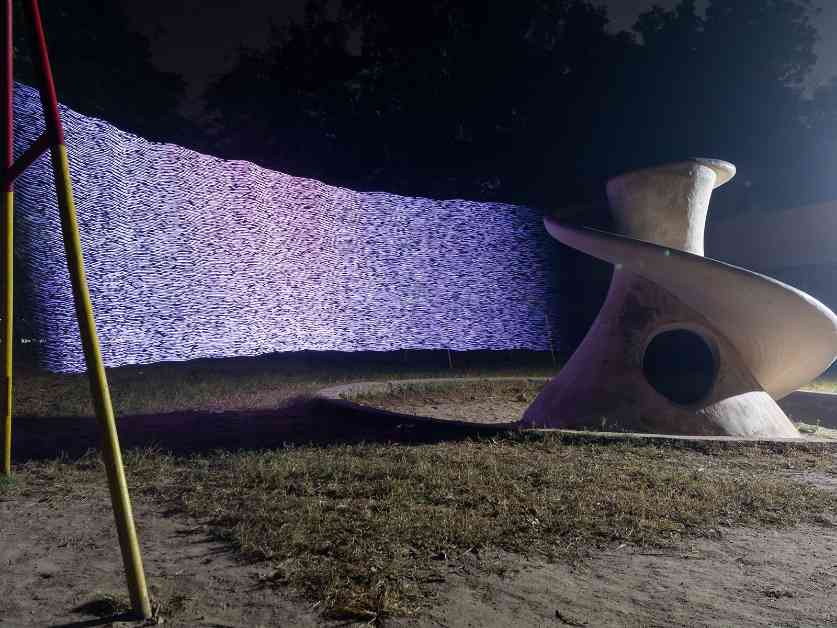Scientists and artists have joined forces to raise awareness about the global impact of air pollution through captivating images. By combining long-exposure photography with pollution sensor data, researchers were able to create visual representations of air pollution levels in India, the United Kingdom, and Ethiopia.
In December 2016, Delhi, India experienced the “Great Smog of Delhi,” marking the city’s worst air quality event in 17 years. Fine particulate matter air pollution, measuring less than 2.5 micrometers in diameter, reached levels over 16 times the safe limit. This invisible threat led to hospitalizations and school closures. A team of environmental scientists and artist Robin Price collaborated to make this invisible threat visible through light painting photography.
The project, named “Air of the Anthropocene,” focused on capturing air pollution levels in everyday places like playgrounds, kitchens, and city streets. By using low-cost air pollution sensors with LED lights, Price created light paintings that illustrated where air pollutants were most concentrated. The striking images from India, Ethiopia, and the United Kingdom highlighted the diverse air pollution challenges faced by these countries.
Air pollution is a significant global health threat, causing about seven million premature deaths annually. Children under five are particularly vulnerable to developing asthma and lung diseases due to poor air quality, with over 700,000 deaths linked to air pollution exposure in this age group. PM2.5, a common air pollutant, is primarily produced by burning fossil fuels and biomass for transportation, industry, and cooking.
Efforts to combat air pollution include reducing emissions at the source and promoting cleaner technologies. In regions like India and Latin America, policies are being implemented to reduce PM2.5 pollution from burning agricultural residue for cooking. Progress has been made in monitoring air quality and implementing stricter policies, resulting in a 53% decrease in air pollution-related deaths among children under five since 2000.
Pope and Price are working to make their air pollution light-painting technique accessible to citizen scientists worldwide by sharing the process as open source. They are also developing an augmented reality approach to light painting using a phone app. By understanding local-level air pollution, communities can demand and support efforts to mitigate air pollution and create a healthier environment.
The collaboration between science and art has sparked global conversations about air pollution and its impact on public health. Through visually engaging images, researchers aim to empower individuals and policymakers to take action against this silent threat to our well-being.






